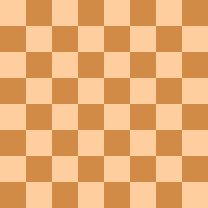
- Chess World Cup
- FIDE Grand Prix
- Olympiad
- World Championship
- List of strong tournaments
- List of world championships

- Checkmate patterns
- Chess openings
- Chess strategy
- Chess tactics
- Chess theory
- Endgames
- Pawn structure
- Problems/Compositions












| a | b | c | d | e | f | g | h | ||
| 8 |

                 |
8 | |||||||
| 7 | 7 | ||||||||
| 6 | 6 | ||||||||
| 5 | 5 | ||||||||
| 4 | 4 | ||||||||
| 3 | 3 | ||||||||
| 2 | 2 | ||||||||
| 1 | 1 | ||||||||
| a | b | c | d | e | f | g | h | ||
Maharajah and the Sepoys, originally called Shatranj Diwana Shah and also known as "The Mad King's Game", is a popular chess variant with different armies for white and black. It was first played in the 19th century in India.
Black has a full, standard chess army ("sepoys") in the usual position. White is limited to a single piece, the maharajah, which can move as either a queen or as a knight on White's turn (hence a manifestation of the amazon). Black's goal is to checkmate the maharajah, while White's is to checkmate Black's king. There is no pawn promotion.
The asymmetry of the game pits movement flexibility and agility against greater force in numbers. By perfect play Black always wins in this game, at least on an 8x8 board. According to Hans Bodlaender, "A carefully playing black player should be able to win. However, this is not always easy, and in many cases, when the white 'Maharaja' breaks through the lines of black, he has good chances to win."
The following sequence of moves can give a forced win by Black. Each move can be played by Black no matter what the response is from White. This method of moves provides a forced mate in 24 for black and has been created and used by George Tsavdaris on Brainking.com.
Now if the Maharajah is on a1 then:
Else: